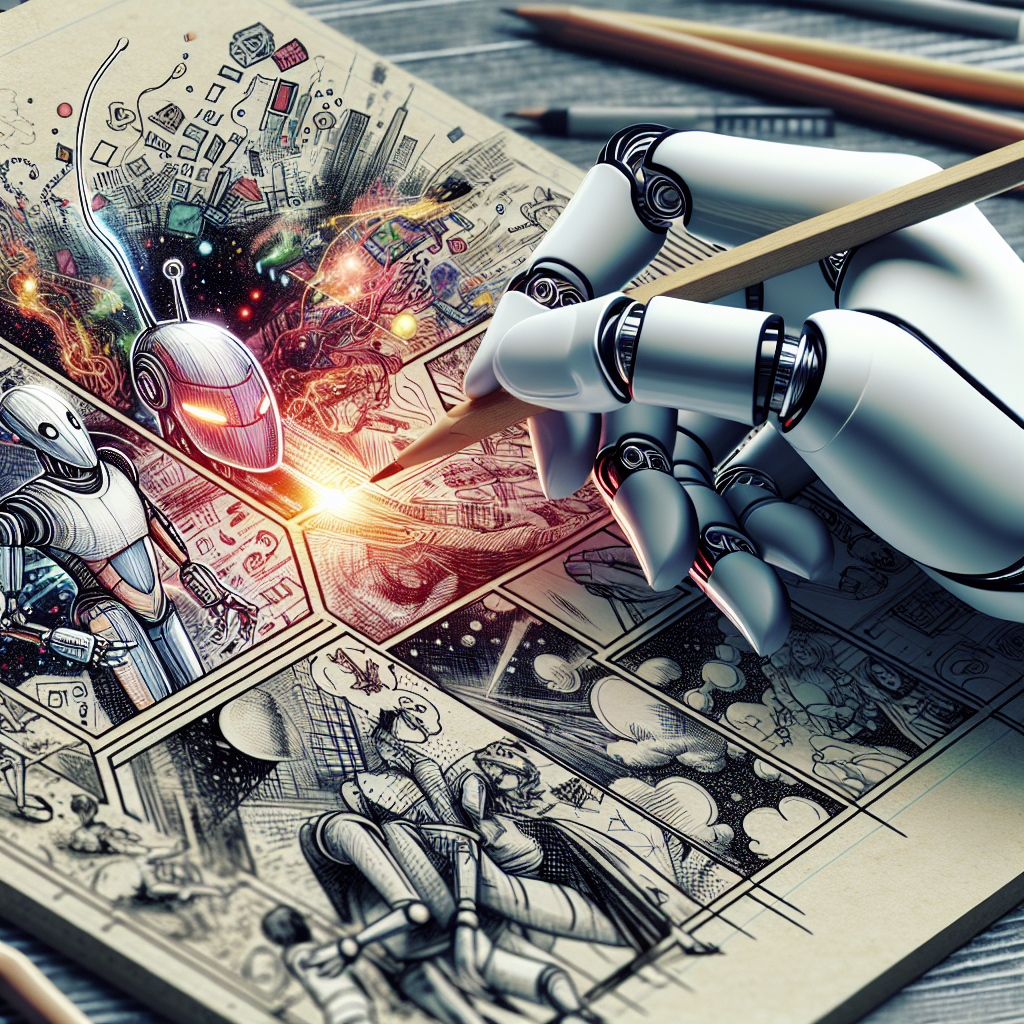Artificial intelligence (AI) has been making significant strides in various industries, from healthcare to finance to entertainment. One area where AI is starting to make a big impact is in the world of graphic novels, where it is being used to enhance both the artistic and storytelling aspects of the medium. By combining art and technology, creators are able to push the boundaries of what is possible in graphic storytelling, creating new and immersive experiences for readers.
AI and Art: Enhancing the Visual Aspect of Graphic Novels
One of the key ways in which AI is being used in graphic novels is to enhance the visual aspect of the medium. AI-powered tools can be used to generate realistic and detailed backgrounds, characters, and special effects, saving artists time and allowing them to focus on other aspects of their work. For example, AI can be used to create detailed 3D models of characters and environments, which can then be rendered in a 2D style to create a unique and visually stunning look for a graphic novel.
AI can also be used to help artists with the coloring process, automatically filling in flat colors or creating realistic shading and lighting effects. This can save artists time and allow them to experiment with different color schemes and styles, ultimately leading to a more visually appealing final product.
Another way in which AI is being used to enhance the visual aspect of graphic novels is through the use of generative adversarial networks (GANs). GANs are a type of AI algorithm that can generate new images based on existing data, allowing artists to create unique and original artwork. By training a GAN on a dataset of existing artwork, artists can generate new characters, backgrounds, and visual effects that are inspired by the original artwork but have a unique and fresh look.
AI and Storytelling: Creating Engaging and Interactive Narratives
In addition to enhancing the visual aspect of graphic novels, AI is also being used to improve the storytelling aspect of the medium. AI-powered tools can be used to analyze and understand narrative structures, helping creators to craft engaging and immersive stories that resonate with readers. For example, AI can be used to analyze the pacing and structure of a story, helping creators to identify areas where the narrative may be lagging or where the tension could be increased.
AI can also be used to create interactive elements in graphic novels, allowing readers to explore different storylines and outcomes based on their choices. By using AI algorithms to generate branching storylines, creators can create a more dynamic and engaging reading experience, giving readers the ability to shape the narrative in real-time.
One example of this is the use of chatbots in graphic novels, where readers can interact with characters in the story and make decisions that impact the outcome of the narrative. By using AI algorithms to power these chatbots, creators can create more realistic and engaging interactions, making readers feel like they are truly part of the story.
Challenges and Limitations of AI in Graphic Novels
While AI has the potential to revolutionize the world of graphic novels, there are still some challenges and limitations that creators need to be aware of. One of the main challenges is the cost of implementing AI-powered tools and technologies. Developing and training AI algorithms can be expensive and time-consuming, making it difficult for smaller creators and independent artists to take advantage of these tools.
Another challenge is the potential loss of artistic control. While AI can be a powerful tool for enhancing the visual and storytelling aspects of graphic novels, it can also lead to a loss of artistic control, as creators may rely too heavily on AI-generated content. It is important for creators to strike a balance between using AI as a tool to enhance their work and maintaining their own artistic vision and style.
Additionally, there are ethical considerations to take into account when using AI in graphic novels. For example, AI algorithms may inadvertently perpetuate stereotypes or biases in their output, leading to potentially harmful representations of characters or storylines. Creators need to be mindful of these issues and take steps to ensure that their work is inclusive and respectful of all readers.
FAQs
Q: How is AI being used in graphic novels?
A: AI is being used in graphic novels to enhance both the visual and storytelling aspects of the medium. AI-powered tools can be used to generate realistic and detailed artwork, assist with coloring and shading, and create interactive elements in the narrative.
Q: What are some examples of AI-powered tools used in graphic novels?
A: Some examples of AI-powered tools used in graphic novels include generative adversarial networks (GANs) for creating unique artwork, chatbots for interactive storytelling, and algorithms for analyzing narrative structures and pacing.
Q: What are some challenges of using AI in graphic novels?
A: Some challenges of using AI in graphic novels include the cost of implementing AI-powered tools, the potential loss of artistic control, and ethical considerations related to bias and representation in AI-generated content.
Q: How can creators strike a balance between using AI and maintaining their artistic vision?
A: Creators can strike a balance between using AI and maintaining their artistic vision by using AI as a tool to enhance their work rather than relying on it completely. It is important for creators to be mindful of the limitations and challenges of AI and to always prioritize their own artistic vision and style.
In conclusion, AI has the potential to revolutionize the world of graphic novels, enhancing both the visual and storytelling aspects of the medium. By combining art and technology, creators can push the boundaries of what is possible in graphic storytelling, creating new and immersive experiences for readers. While there are challenges and limitations to using AI in graphic novels, with careful consideration and planning, creators can harness the power of AI to create innovative and engaging stories that resonate with audiences.

